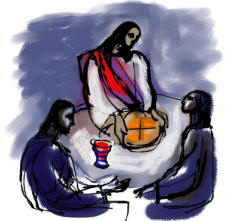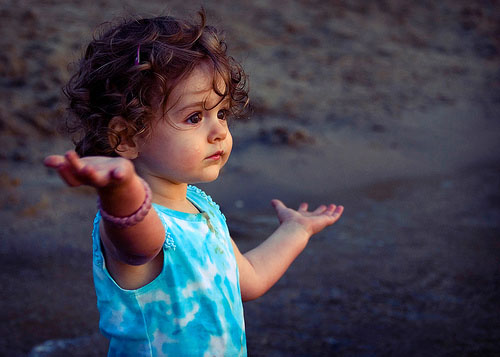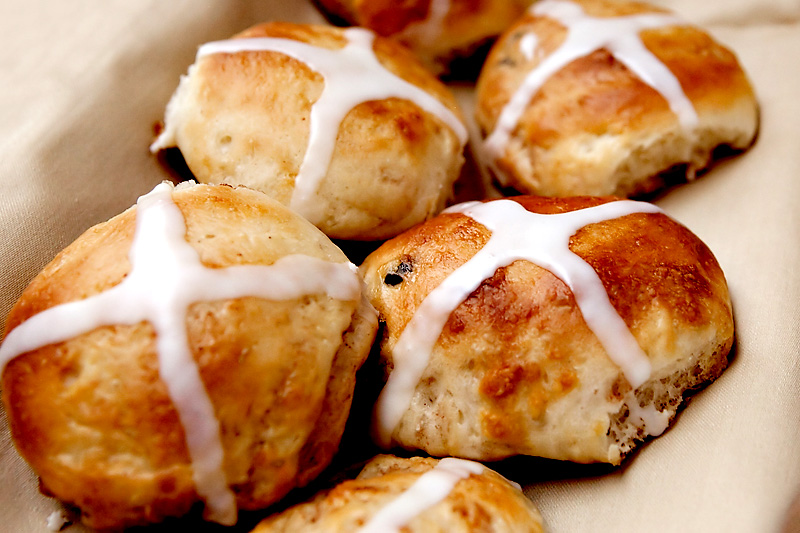
Holy
Week offers an astonishing array of human experience: celebration and shared
meals, betrayal and loneliness, suffering and death, grief and guilt, sacred
mystery, awe and wonder and joy beyond our capacity to explain. It’s the heart
of our salvation history, the Christian journey through death to new life. I
hope you and your children are able to take part in some of the services that
follow Jesus through his Passion.
What
I’ve chosen to offer here out of all this array are suggestions for sharing a simple
celebratory “Festal Meal” for Easter, incorporating some of my earlier
suggestions for the season.
First,
prepare the table. An Easter table should have a profusion of flowers as a
centerpiece. If you are lucky enough to have flowers already growing in your
yard, invite the children to help pick some. Here in Maine, a recent snowstorm
means we’ll be having a “white Easter” so no flowers of our own, but even the
local grocery store offers rows and rows of colorful flowers, so you can take
the children on a special trip to choose their favorites.

As a
way of marking where everyone will sit at the table, use the decorated
containers of wheat grass (from February16, 2013 post), topped with a colored egg (February 23).
Put
bells at each person’s place, and have a candle for an adult to
light at the start of the meal.
If you
have time to make hot cross buns (March 8), there’s a special time at the
start of the meal to eat them, but any bread, rolls, biscuits, or other
grain-based option would also be a fine accompaniment to singing “Now the Green
Blade Rises” as part of the short family liturgy (see below).
Once
you’ve prepared the table, it’s time to prepare the children by teaching them
the appropriate responses and gestures that go with the prayers (see the meal
itself);
·
Teach
them when they respond, ”God was with
them,” to stretch out their arms,
palms up
·
Teach
them when they respond, “God is with us,”
to hug themselves by crossing their arms and putting their hands on opposite
shoulders.
·
After
each blessing, teach them to respond: “Amen.”
And if
you haven’t yet taught them “Now the Green Blade Riseth” (February 16),
consider doing so now, even if there’s only time to learn one verse. The
children could then teach any grown-ups who haven’t yet learned it. If your
children are old enough to read, you could even print out copies of the lyrics for everyone.
Feel
free to simplify the liturgy as feels right for your family, even down to using
just the blessings at the end. Any small good thing we do at home to nurture
our children’s faith blesses them, and us.
Festal Meal Liturgy for Easter
An adult should light the candle and say: The Light of Christ.
Everyone: Thanks be to God.
Adult: Even when Jesus died
on the cross and his disciples ran away because they were scared,
Children (with arms outstretched, palms up,
demonstrated by an adult): God was with them.
Adult: Even when we are sad
or scared,
Children (with arms crossed, hands on opposite
shoulders as though hugging themselves, demonstrated by an adult): God is with us.
Adult: When the women
found the empty tomb on Easter morning and knew Jesus was alive,
Children (arms outstretched):
God was with them.
Adult: Whenever we are surprised by joy,
Children (arms crossed):
God is with us.
At this time, the adults should lead the
children in ringing their bells to acknowledge and celebrate Jesus’ Resurrection by making a joyful
noise. Then all should join in singing “Now the Green Blade Riseth,”
accompanied, if available, by tambourines and/or drum, or just the bellss.
Afterwards would be an appropriate time to share the hot cross buns, reminding
the children how the plain bread of sorrow became the sweet bread of Easter, or
how grain is what’s used to make bread.
After a suitable amount of time for eating buns, an adult should ring a
bell to recall the children to the liturgy.
Adult: As we share this Easter meal together,
Children (arms crossed):
God is with us.
Adult: And
now may God the Creator bless us.
Children:
Amen.
Adult: May God the Risen Son
be our companion.
Children: Amen.
Adult:
May
God the Holy Spirit dwell within us.
Children: Amen.
Everyone: Thanks be to God!







